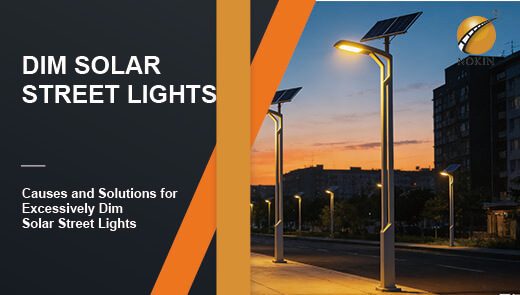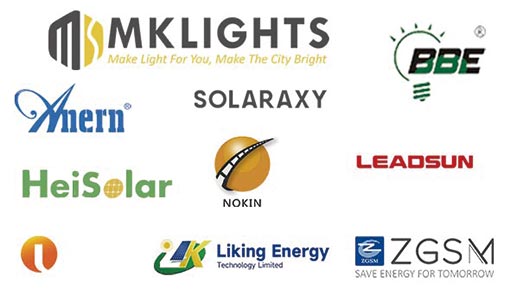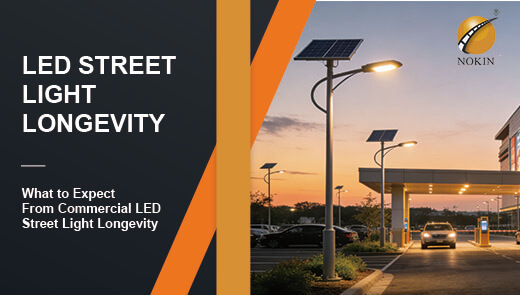How Reliable Are Solar Street Lights in Different Weather Conditions
With its environmentally friendly and energy-saving features, solar street light has gradually become a popular lighting choice for city roads, country trails, parks and scenic spots. However, weather factors are complex and changeable, from hot sun to torrential rain, from cold winter to snow and wind, different weather conditions on the normal operation of solar LED street lights bring many challenges. In this article, we will analyze the operation of solar street light in different weather conditions, such as hot and sunny, rainy, cold, snowy and windy, analyze the challenges it faces, and put forward targeted solutions to provide professional reference for the application and promotion of solar street light.
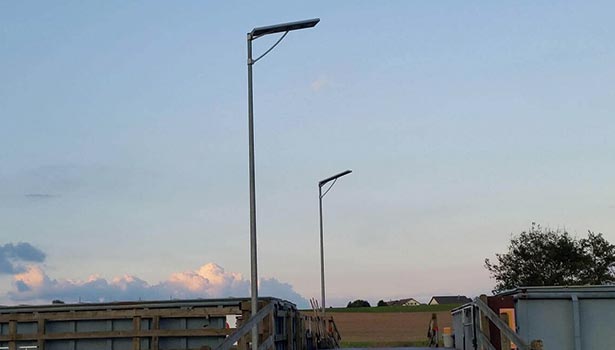
Why Are Solar Street Lights Reliable?
Self-sufficient
One of the biggest advantages of solar LED streetlights lies in their operation mode independent of the traditional power grid. During the day, the solar panels act like diligent “energy collectors”, converting the solar energy hitting the surface into electrical energy and storing it in the supporting batteries. At night, the stored electricity drives the lamps to glow and illuminate the road. This mode of operation makes it particularly suitable for remote areas with insufficient grid coverage, such as mountain villages and camping bases in the wild, where lighting needs can be addressed without the need to lay complex transmission lines.
Durability
Modern solar powered street lights are designed and manufactured with full consideration of the test of harsh outdoor environments. The shell is mostly made of weather-resistant plastic or corrosion-resistant metal, which can effectively resist rain erosion and sand abrasion. The internal electronic components have also undergone special protective treatment, with a certain degree of moisture-proof, dust-proof ability. Even when encountered with strong winds, heavy rain and other extreme weather, high-quality solar street lights can still maintain stable operation and ensure a long service life.
Low Maintenance Advantage
Compared with traditional street lights, solar powered street lights have a relatively simple structure, reducing a large number of mechanical transmission components and complex power supply lines. This makes its daily maintenance work greatly reduced. Taking bulb replacement as an example, the LED light source commonly used in solar street lights has a service life of tens of thousands of hours, which is much higher than that of traditional incandescent and fluorescent lamps. At the same time, since it does not rely on the external power grid, it also avoids frequent overhaul caused by line failures, reducing maintenance costs and labor input.
Solar Street Lights in Hot and Sunny Climates
Challenges Facing Solar Street Lights
overheating
Persistent high temperatures in summer can negatively affect the power generation efficiency of solar panels. When the surface temperature of a solar panel is too high, the electronic activity of the semiconductor material inside it intensifies, reducing the efficiency of power conversion. According to research, for every 1°C increase in solar panel temperature, the power generation efficiency of solar panels may decrease by approximately 0.4% - 0.5%.
Aging risk
When exposed to strong sunlight for a long period of time, the encapsulation materials and semiconductor chips of solar panels will be eroded by ultraviolet rays. UV rays can cause the encapsulation material to deteriorate, become brittle and crack, which in turn leads to the intrusion of moisture and oxygen, affecting the performance and lifespan of the solar panel. At the same time, the chip may also suffer from performance degradation due to UV exposure, reducing power generation capacity.
Solutions
Choose the right lamps and lanterns
When installing solar street lights in high-temperature areas, you should prioritize products with high-temperature resistant designs. Some solar panels use new semiconductor materials and special encapsulation processes to maintain high power generation efficiency in high temperature environments. In addition, the angle-adjustable solar panel bracket is also a good choice. By flexibly adjusting the angle of the panel, it can not only ensure sufficient sunlight, but also reduce the risk of overheating by reducing direct sunlight when the sunlight is too strong in the middle of the day.
Cooling Mechanisms
Equipping solar panels with an active cooling system is an effective way to combat overheating. For example, installing small cooling fans to remove heat from the surface of the solar panels through forced air convection, or adopting liquid cooling technology, which utilizes circulating coolant to transfer heat out. These cooling methods can keep the solar panel temperature within a reasonable range and ensure stable power generation.
Protective Coating
Applying UV protective coatings on the surface of solar panels can effectively block UV rays. This type of coating not only reflects some of the UV rays and reduces heat absorption, but also forms a protective film that prevents moisture and oxygen from coming into contact with the internal materials, slowing down the rate of aging and prolonging the life of the solar panels.
Regular Maintenance
Formulate a regular maintenance plan and arrange professionals to inspect the solar street light. Focus on whether there are discoloration and cracks on the surface of the solar panel, whether the terminals are loose, and whether the heat dissipation system is operating normally. Timely detection and treatment of potential problems can effectively guarantee the reliability of solar street lights in high-temperature environments.
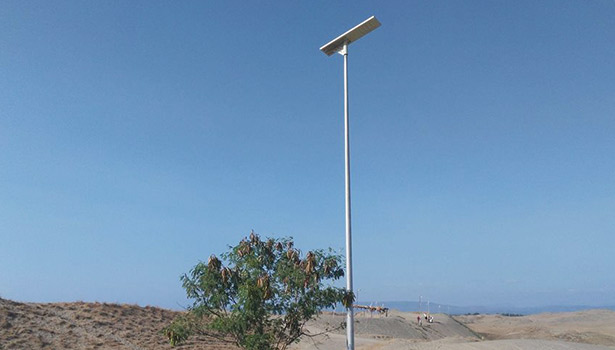
Challenges and Solutions for Solar Street Lights in Rainy Days
Challenges Facing Solar Street Lights
Insufficient power generation
The intensity of sunlight decreases dramatically in rainy days, only 10% - 20% of sunny days. This directly leads to a sharp decrease in the amount of power generated by the solar panels, making it difficult to meet the normal demand for lighting at night. If it rains for many days in a row, the endurance of the streetlights will be severely tested.
Solution
Optimize energy storage
Reasonable design of the energy storage system of solar street lights is crucial. Priority should be given to high-performance lithium batteries, especially lithium iron phosphate batteries. These batteries have the advantages of long cycle life (more than 2000 times), high charging and discharging efficiency, and good safety. In the system design stage, according to the local climatic conditions and lighting requirements, the battery capacity is calculated accurately to ensure that the normal lighting can still be maintained for 3-7 days in case of insufficient light for many consecutive days. At the same time, it is important to ensure that the battery compartment has a waterproof rating of IP67 or higher to prevent rainwater from penetrating and causing short-circuit failures.
Enhancing Panel Efficiency
In terms of material selection, monocrystalline silicon solar panels have significantly better photoelectric conversion performance than polycrystalline silicon panels in low-light environments, with a conversion efficiency of over 22%. In terms of structural design, by optimizing the topology of solar cells, accurately controlling the cell spacing and increasing the effective light receiving area, it can improve light energy utilization and reduce energy loss. In addition, the use of curved lamination and streamlined frame design not only reduces wind resistance, but also enhances the structural stability of the solar powered street light in bad weather to ensure continuous power generation.
Challenges and Solutions for Solar Street Lights in Cold Weather
Challenges Facing Solar Street Lights
Decline in power generation
Snow covering the surface of solar panels can block sunlight, resulting in a significant reduction in power generation efficiency. Studies have shown that when solar panels are completely covered by snow, power generation may be reduced by 0.85% - 5.31%. If not cleared in a timely manner, prolonged snow buildup can prevent streetlights from functioning properly due to lack of power.
Solutions
Proper Installation Design
Mounting the solar panels at a proper tilt angle can utilize gravity to make the snow slide off naturally. Generally speaking, the tilt angle should be adjusted according to the local snowfall and seasonal characteristics. At the same time, the surface of solar panels is made of smooth tempered glass, whose good hydrophobicity and smoothness help the snow to slide off quickly when it melts, reducing the residence time of the snow.
Timely Cleaning
When the snow is thick, manual cleaning is required. During the cleaning process, you can use soft cleaning tools to scrape the surface of solar panels to prevent glass breakage. Gentle water rinsing can also be used, but care should be taken to avoid water penetrating into the electrical connection parts. For large projects, you can consider hiring a professional solar panel cleaning service team to ensure the safety and effectiveness of the cleaning work.
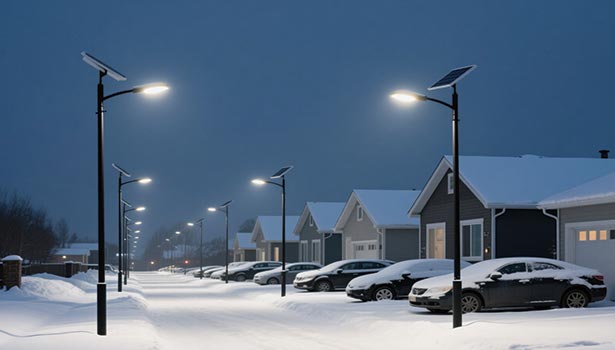
Challenges and Solutions for Solar Street Lights in Windy Areas
Challenges Facing Solar Street Lights
Physical damage
Strong winds can cause serious physical damage to solar streetlights. The huge impact from high winds may cause the solar panel bracket to deform, break, or even blow down the entire street light. In addition, tree branches, billboards and other debris floating with the wind may also hit the solar powered street light, damaging the lamps and solar panels.
Solution
Reinforcement
Adopt high-strength metal bracket and solid foundation to ensure the solar street light remains stable in high wind. The structural design of the bracket should fully consider the wind load, and improve the overall wind resistance by increasing the support points and strengthening the connection parts. During the installation process, operate in strict accordance with the construction specifications to ensure the installation quality.
Wind blocking device
Installing windbreaks or protective nets around the solar streetlights can effectively disperse the wind and reduce the direct impact of the wind on the streetlights. The material of the windbreak device should be wind-resistant, corrosion-resistant, and not affect the solar panels to receive sunlight.
Regular Inspection and Maintenance
Regularly conduct a comprehensive inspection of solar powered street lights in windy areas, focusing on the stability of the bracket, the connection of components and whether there are traces of damage. Repair or replace the damaged parts in time to ensure that the street light is always in good operating condition.
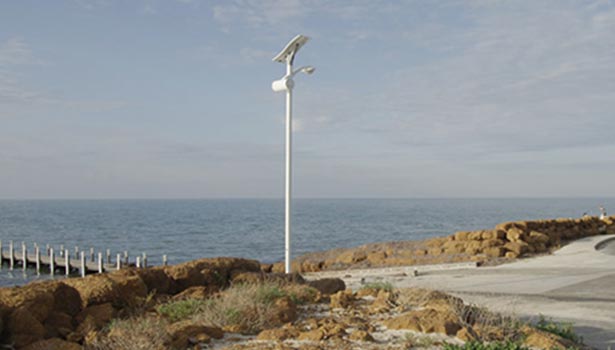
Conclusion
In hot regions, power generation efficiency is safeguarded through heat-resistant design and cooling measures; In rainy days, solar street lights rely on optimized energy storage and efficient solar panels to maintain lighting; and cold, snowy, and windy regions all have corresponding coping strategies to ensure that the solar street lights operate properly.
As a typical representative of green energy application, solar street light has a broad development prospect. With the continuous progress of technology and accumulation of application experience, its reliability under different weather conditions will be further enhanced.

